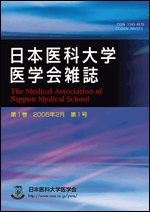We introduce our surgical technique for carotid endarterectomy (CEA) and our use of vocal fold electromyography to prevent perioperative complications. Between 2006 and 2015, 243 CEA procedures were performed (186 symptomatic CEAs and 57 asymptomatic CEAs). All patients were screened preoperatively by cardiologists for congestive and/or ischemic heart disease. If coronary artery stenosis was found, it was treated before CEA was performed. In this series, CEA was done under general anesthesia with a neurosurgical microscope, and we used arterial patch grafts with or without shunting, depending on a number of intraoperative parameters. This procedure requires careful attention to technical details, and specific principles must be followed to achieve a consistently favorable outcome. For high-risk patients with a higher carotid bifurcation, we exposed the distal internal carotid artery (ICA) beyond the hypoglossal nerve under microsurgery. It is important to adequately expose the distal ICA to permit direct visualization of the entire atherosclerotic plaque. Of the 186 patients with symptomatic CEAs, perioperative stroke occurred in 3 (minor stroke in 1 and major stroke in 2). The surgical morbidity and mortality rate were 1.2% and 0%, respectively. Among the 57 patients with asymptomatic CEAs, there was no surgical morbidity or mortality. Vagus nerve palsy is the most commonly recognized complication of CEA, but there are others such as stroke and cardiac events. Injury to the vagus nerve or one of its branches during CEA can result in vocal fold paralysis (VFP), but the exact mechanisms responsible for VFP are unclear. Therefore, we monitored vocal fold electromyograms during CEA. Sudden loss of the vocal fold electromyogram signals was noted in 3 patients (during plaque removal in 2 and during arterial wall suture in 1). In these patients, the cause of vagus nerve injury may have been traction on the nerve at the time of distal ICA manipulation. We examined vocal fold movements postoperatively with a nasolaryngoscope and detected VFP in 11 patients (9%). Monitoring vocal fold electromyograms may be useful for elucidating the mechanism of vagus nerve injury related to CEA. During long-term follow up (32 months), minor ipsilateral stroke occurred in 2 patients, and 10 patients died of causes other than stroke, including 1 death from myocardial infarction and 7 from malignancies. The incidence of adverse events (all-cause death, stroke, myocardial infarction) at 30 days after CEA was 1.2%, which seemed to be acceptable compared with other reports. CEA effectively prevents stroke (even in high-risk patients) if performed according to a consistent treatment strategy and with appropriate technical support.
抄録全体を表示
